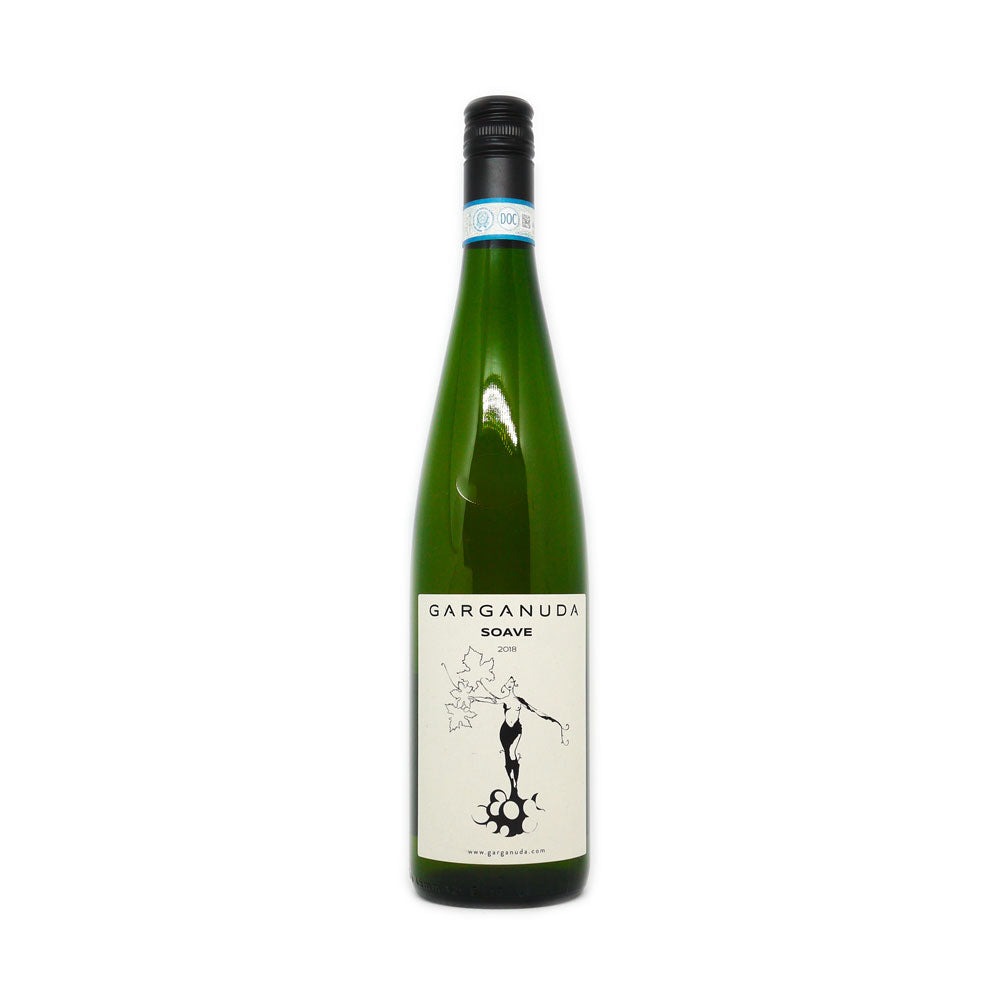
Soave | Garganuda
DENOMINATION: Soave DOC
TYPE: white
GRAPE: garganega 100%
ORIGIN: Italy, Veneto
AGEING POTENTIAL: 5 years
SERVING TEMPERATURE: 10-12° C
GLASS: wide glass
ALCOHOL: 11% vol.
FORMAT: 75 cl
THE WINE
TECHNICAL SPECIFICS
FRESHNESS: ◼︎◼︎◼︎◼︎◻︎
BODY: ◼︎◼︎◼︎◻︎◻︎
SAPIDITY: ◼︎◼︎◼︎◼︎◻︎
SOFTNESS: ◼︎◼︎◼︎◻︎◻︎
NOTES BY OUR SOMMELIERS
👁 Straw yellow;👃🏻 the nose expresses an intense and broad bouquet from fruit (citrus fruits) to flowers (bergamot and hawthorn), hints of stone and herbaceous scents;
👄 on the palate, the drink is very pleasant: fresh, crisp, with great sapidity. Long finish, with a return of the citrus fruits perceived on the nose.
FOOD PAIRINGS
A very special fresh and fragrant Soave, perfect with fish, sushi, fresh cheeses and seafood crudités.
WINE-MAKING AND REFINEMENT
A Soave made from pure Garganega, from 30-40 year old vines in the hills, grown under biodynamic methods. Spontaneous fermentation, with only indigenous yeasts. Matured in cement and unfiltered.
YOU WILL LOVE IT FOR...
its sapidity.
ORIGIN
TERROIR
The Soave DOC wine production area is located in the province of Verona, below the Lessini mountains, on the border with the province of Vicenza. The Soave vineyards lie within a large volcanic basin. There is a profound relationship between soils composed of basalts and the richness of taste found in the glass. Basalts are volcanic rocks formed by successive cycles of eruptions over three geological cycles in an underwater environment. The eruptions gave rise to volcanoclastic products of different colours ranging from grey to yellow to red, depending on the environment of formation and the degree of oxidation. The action of exogenous agents then modelled the landscape, giving rise to the beauty of the land we see today.
But there is more than just basalt: black stone mixes with white limestone to create a blend of minerals from which the vines benefit greatly. The limestones are what remains of ancient submarine seabeds; these sediments rich in calcium carbonate, deposited on the seabed, trapped animals and shells that we can still recognise today in fossils of the most curious and varied shapes. All this creates very special conditions for the cultivation of vines.
The Soave area was already known in Roman times for its good position and the intensity of its cultivation.
In 1931, the first delimited area for the production of 'Vino Tipico Soave' was recognised, while the historic area of the Soave Classico DOC appellation was delimited in 1968.
As for the grapes grown in the area, Garganega has a small heritage of aromas of which almond and white flowers are the clearest. It has a long vegetative life, so much so that it ripens in October; it has a hard skin and is often deep yellow in colour due to its prolonged ripening. It has no marked acidity but a very interesting balance between extracts and sugars.
WINERY
Ever since he was young, Andrea Fiorini Carbognin has cultivated a great interest in wine, inherited from his winemaking grandparents.
In the 1990s came his love at first sight for Soave and later for Durello. His meeting with Stefano Menti, a producer in Gambellara and a key figure in his training, was fundamental. From there, the decision to make his own wine, in an unconventional way, starting from a tiny plot of land granted to him by his uncle Adelino and with Stefano Menti's suggestions. In 2014, he made his first harvest after a year of entirely manual work and without weeding or fertilising, nor chemical products. These principles, combined with a real obsession for quality and naturalness of the products, have always remained alive.
The vineyard, in which there are vines up to 60 years old, is located in the easternmost part of the specification on basaltic volcanic soil, and operates with a natural approach, according to the rules of biodynamics.

When will I receive my order?
If the bottle is in stock it will be sent immediately and you will receive it in a couple of working days.
Is the order renewed?
No, this product is not bound by any type of subscription and cannot be renewed.
Is there a minimum number of bottles?
No, you do not have to order a minimum quantity of bottles: you can choose to receive just one bottle of each type.

This product is rated 2.0 of 5.0 stars.
It has received 2 reviews.
